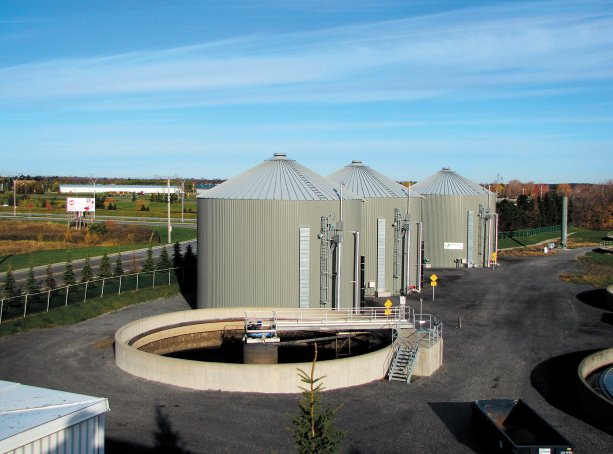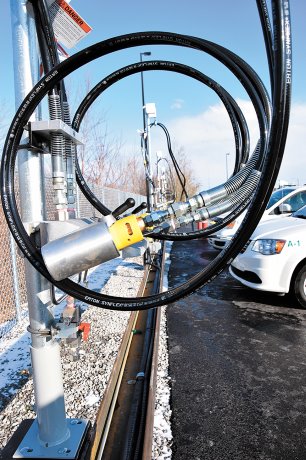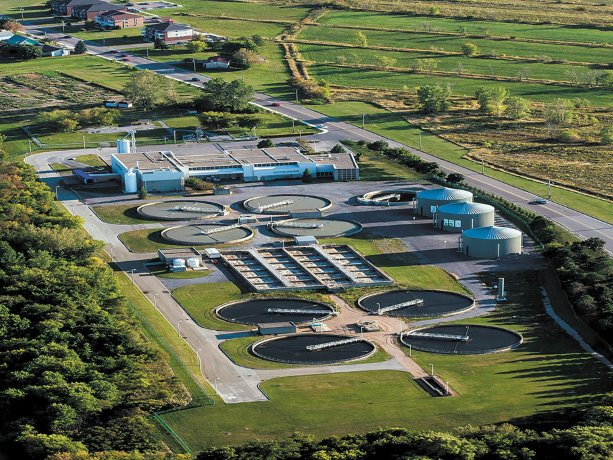The finishing touches are being put on the Saint-Hyacinthe, Que. biogas plant and if all goes according to plan it should be up and running this fall.
The plant will feed methane gas to the local natural gas grid and begin earning the revenues needed to pay back on the $85 million investment to make it a reality, says stakeholders.
The small Quebec municipality has barely 55,000 people but has punched well above its weight with the conception, design and execution of the plant which will divert residential organic waste and waste from local food processing plants from landfill.
What’s more remarkable is that they developed the project all in house, with no consultants.
"We had to do something because in 2020 the province will not allow organic waste to go to landfill," said Saint-Hyacinthe councillor Donald Côté who was involved in the project since its inception.
"We had two very smart people, the director of engineering and sewage treatment and they did some research and found organic waste treatment to generate biogas commercially is very common in Europe."
The town sent the two off on a fact finding mission and they reported back recommending a German built system, he said. It’s a simple process in concept, said Côté.
"You mix some sewage in with some organic waste, add some heat and let the bacteria do their job," he said. "It’s like making wine in some ways. Then you just keep going."
With the project announced, the municipality is getting enquiries from all over Canada and the U.S.
"New York is thinking the same way," he said. "I think we’re the only one in North America but there may be a plant in California. We’re really writing the book on this. We’ve done some phenomenal research."
After some seed funding to confirm the viability, the $85 million project was funded a third each by the municipality, Quebec and the federal government.
"The provincial and federal money were grants but we can start paying back the municipal money when we are fully operational starting later this year and in to 2017," he said. "We think that we can pay back the portion Saint-Hyacinthe invested within six to 10 years conservatively."
They are also in the process of adding five more digesters which will ramp up capacity to both receive and treat organic and generate methane.
Saint-Hyacinthe is an unlikely place for the innovative project. It’s on the shores of Rivière Yamaska and dates back to the 1930s. It’s the administrative hub for Montérégie east of Montreal. However, it does have a history of innovation, with an agri-food technology centre which was cited by the Association of University Research Parks in 2011.
The biogas created is initially being used to power the process itself, which requires heat, but also to heat municipal buildings and power some of the fleet.
"We have eight vehicles which run on gas out of 70 total," he said. "There are two filling stations, one for emergency quick fills and the other for longer overnight fills."
When it is fully operational Saint-Hyacinthe will feed some 13,000 cubic metres of methane into the natural gas grid through a 20 year contract with regional energy utility Gaz Métro, the largest natural gas distribution company in Québec. It has a network of more than 10,000 km of underground pipelines serves 300 municipalities and more than 190,000 customers.
The processing facility will convert resident waste from 23 area municipalities’ brown bin programs, which are similar to Ontario’s green bin program.
Because the area also has a high concentration of food processing, the plant will get a tip fee for accepting that waste.
"There’s fruit and vegetable processing and a lot of dairy processing for cheese, milk and yogurt here, all of which is perfect for the digesters."
The only challenge thus far in ramping up the system – which will need several months to build up momentum to swing into full capacity, is in the incoming organics.
About five per cent of the brown bin sources are causing 95 per cent of the system problems, Côté said.
"The issue is people are putting branches and leafy material in," he said. "Of course we said they could do this when we started before we thought about biogas. But they’re also putting in large pieces, some are even logs."
The fibrous material clogs up the system and so they’ve diverted waste to a composter first where the material is "predigested" with bacteria to soften it up ready for the biogas digesters.
The only downside is that the site where the plant has been located is full and unable to expand further.
"We have no more room and if we want to build more we’ve have to find another site," he said.

1/2
Photo:











Recent Comments
comments for this post are closed